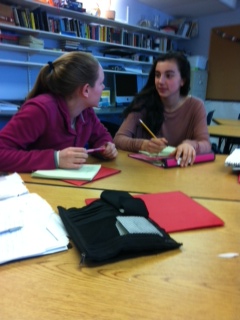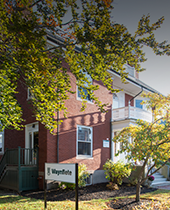No Divisional Divide Here
They wait outside my classroom by the closed door for the “big kids” to leave. Their energy is un-containable and fueled by the anticipation of seeing a friend’s older brother, a “big sister” from their Lower School days, or the basketball player who scored the winning shot. After the big kids have filed out, they enter like a herd of untethered wild horses, vying for their favorite seats and ready for a class of discussion, writing, sharing, and questions – all the same elements that compose the study of literature for an Upper School student of English. These Middle Schoolers share with their elder peers the foundation of their future education.
I revel in the opportunity each day to teach both my sixth graders and Upper School students. And the years have taught me that there is surprisingly little difference in my methods of teaching to instill a life long love of reading and writing. This week, as my sixes work in small groups to script an ode and a play on the adventures of Odysseus, they are learning the skills of cooperative work. In small groups, they brainstorm, create outlines, and write first drafts, a process that my ninth grade class also uses to write an analytical essay on Macbeth.
This fall one of my sixth grade students entered the room clutching to her chest the poem by Emily Dickinson Hope is a Thing with Feathers, declaring, “This poem is everything I feel about life.” When a junior in the Upper School class Word and Image first read The Red Wheel Barrow by W.C. Williams, he shared that the message of this poem gave him instruction for living his life. Poetic language read at all grade levels becomes familiar and comfortable as taught by silent reading, shared recitation, and writing on the prompt these poems provide.
Discovering what you think by reading the work of others, then learning to articulate your own relationship with the words is the foundation of our program from sixth grade to graduation. In seventh grade, creating a web of adjectives that describe a favorite place of refuge becomes the list of images students use to craft a personal essay senior year. Sixth grade participation becomes student led discussion sophomore year. Learning is the collection of all of these moments of discovery, one class building on the next.
The relationships between my students and myself are enriched as I experience the privilege of teaching them multiple times through the years. Sometimes, when they are seniors, they sit in the same place they chose every single day of their sixth grade year. I hear their present voices echoing their voices from years past, and I am filled with gratitude for the Waynflete experience of teaching and learning 6-12.



